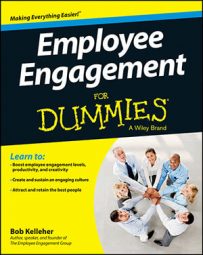When you think about whether your workforce is engaged with your company’s purpose, and why they should be, ask yourself if they are even aware of that purpose. Go to your company's website, and try to find out why it's in business. Not what you do, make, or sell — but why.
Most companies know what they do, make, or sell. But they struggle when they try to define their reason for being — their “why” — even though being able to do so makes business sense. In his book, Good to Great: Why Some Companies Make the Leap . . . And Others Don't (HarperBusiness), author Jim Collins notes that companies that focus on purpose outperform their peer group by a factor of six. You read that right: They do six times better than their peers.
Despite this, most companies struggle when it comes to identifying their why. Indeed, very few companies are able to identify a purpose that resonates with their employees both intellectually and emotionally. Why?
Well, for starters, identifying an organization's why is often difficult. Sure, identifying the purpose of a charity for the homeless is easy. Most likely, it's something along the lines of “providing jobs for the homeless” or “providing shelter to those in need.” But not every firm's purpose, or mission, is so readily understood or so easily articulated.
Real world examples of firms with purpose
Take Raytheon, a large global defense company. It’s easy to identify what Raytheon does, makes, and sells. But its reason for being? Its purpose, mission, or why? Identifying that is a bit more difficult. Even so, Raytheon’s Patriot missile division has crystalized its purpose. As one employee puts it, “We protect those who protect us.”
Here are a few examples of other firms that have identified their purpose:
3M: “Our purpose is to solve unsolved problems innovatively.”
Merck: “Our purpose is to preserve and improve human life.”
Disney: “Our purpose is to make people happy.”
Mary Kay Cosmetics: “To inspire women to transform their lives, and in doing so, help other women transform their lives.” (Note that Mary Kay Cosmetics refers to its purpose as its “dream.”)
The Coca-Cola Company: “To refresh the world, inspire moments of optimism and happiness, create value, and make a difference.”
Unfortunately, the very people who most need to understand a company's purpose — CEOs, COOs, CFOs, managing directors, and other key executives — are often the last to grasp its importance. These left-brain types typically spend their time worrying about numbers rather than “soft” issues like purpose and values.
Ensuring that these stakeholders understand and appreciate your firm's purpose is critical. Otherwise, you'll likely be unable to build a line of sight around your purpose.
How to define your company’s purpose
Need help pinpointing your organization's purpose? Try following these steps:
Send out a quick survey to a sampling of employees from all representative groups, including generations, tenure, background, levels, culture, and departments.
You can build the survey using SurveyMonkey. It's free!
Ask the following questions:
Why do we exist as an organization?
In 100 years, what do we want to be remembered for?
How are we different from our competitors?
What is the one thing we do as an organization that everyone admires?
What inspires you about working here?
Assemble a “Purpose” task team to evaluate the answers to these questions, with the goal of developing two or three draft purpose statements.
This team should include owners, key leaders, and a cross-sectional group of high performers.
Distribute the top purpose statements to all employees for further input and perhaps to vote for the statement that resonates the most.
Have the company leadership select the best purpose statement using the input provided and begin the communication and branding outreach.
Organizations that build their culture on purpose, and that hire people with the behaviors and traits that match their culture, understand that employees are more likely to give if there is a bigger purpose worth rallying behind.
This purpose is key to getting your employees to contribute above and beyond what's expected of them (in other words, apply discretionary effort), which can be a competitive advantage. Having a purpose is like magic dust for organizations.

